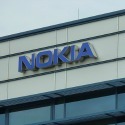Nokia brings AI to the edge for 5G
Finnish vendor unveils service that allows machine learning to be deployed at the edge for automated network fixes.

Nokia unveiled a new product that allows artificial intelligence (AI) technology to be deployed at the mobile network edge, with the aim of reducing buffering, jitter and other annoying latency-related issues.
The service is called "AVA Quality of Experience (QoE) at the Edge" and is based on the Nokia AVA "AI-as-a-service" offering, which combines data science, telco and cloud technology from Nokia and Microsoft.
According to Nokia, the service allows telcos to "confidently launch" consumer services such as video streaming and cloud gaming that perform better when network latency is at its lowest.
It enables machine learning algorithms to be deployed closer to the customer, allowing "automated actions to fix customer issues instantly," as Nokia described.
The Finnish vendor claimed that the deployment of AVA algorithms on traditional network architectures has achieved a 59% reduction in Netflix buffering and 15% fewer YouTube sessions that suffer from long playback.
Notably, Nokia said the service will be available for multivendor open radio access networks (RAN), "ensuring the different components work in unison with subscribers benefitting from ultra low latency, reduced jitter and buffering."
Latent demand
In a canned quote provided for Nokia, Stefan Pongratz, vice president of Dell'Oro Group, noted that AI will play an increasingly important role in managing end-to-end network complexity.
"Nokia's approach combines centralized AI to generate network-wide insights and pre-trained models with distributed AI for real-time optimization of the RAN," he said.
Want to know more about 5G? Check out our dedicated 5G content channel here on Light Reading.
Certainly, the combination of 5G, edge technology and AI will be hugely beneficial to operators as they launch new, low-latency services.
Indeed, some service providers have begun taking tentative steps toward charging money for lower latency.
A recent report carried out on behalf of communications software and network solutions provider Ribbon Communications also highlighted the revenue opportunities of cloud gaming for carriers with 5G networks.
Related posts:
— Anne Morris, contributing editor, special to Light Reading
Read more about:
EuropeAbout the Author(s)
You May Also Like



.jpg?width=300&auto=webp&quality=80&disable=upscale)








